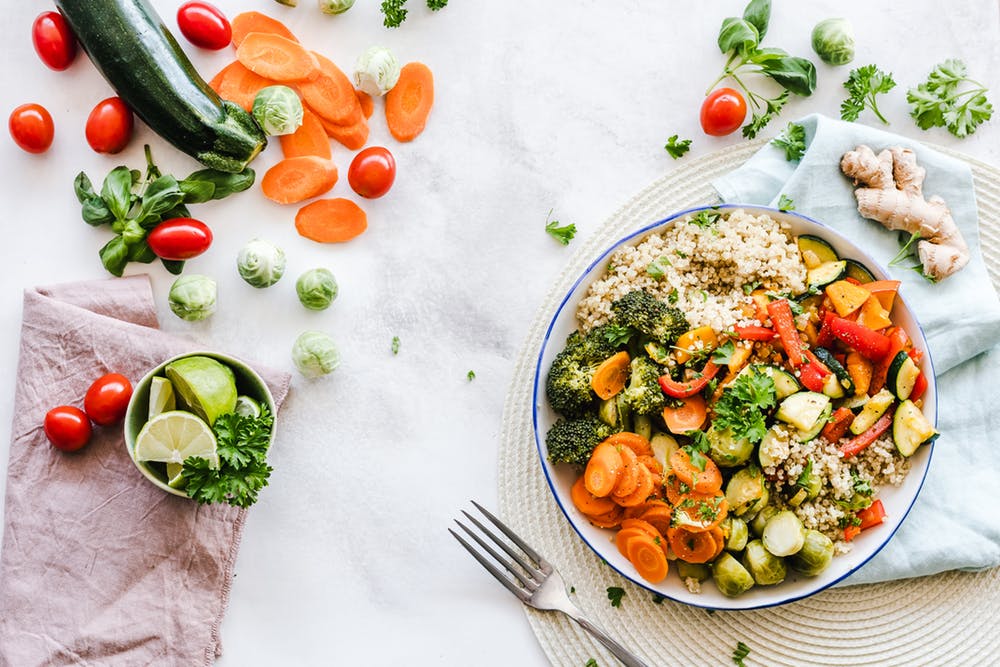“70% of fitness is nutrition; take it seriously.”
The mass number of foods out there sometimes makes it overwhelming when deciding which foods to get from the grocery store and cook. If you have a fairly basic idea of how to start a meal plan, here are five foods you should add to give you that extra lift when it comes to your overall fitness. In addition, these ten foods are all scientifically researched and proven to contribute to overall health.
1. Nuts

Nuts are healthy and loaded with magnesium, vitamin E, fiber, and other nutrients. Nuts are high in monounsaturated fats. These fats are a healthy form of fats found in olive oil, seeds, and animal-based foods. Because of monounsaturated fats, nuts tend to help with losing weight and fighting off diseases like type 2 diabetes and heart disease. The composition of eating nuts tends to make people feel full much faster because it has a high source of fiber and protein. Studies even revealed that almonds increased weight loss and potentially boosted metabolism.
2. Fish

Rather than pork, bacon, or fried chicken, try incorporating more fish into your diet. It is an excellent source of high-quality protein; it also has the healthy fat you want. For example, salmon has high amounts of omega-3 fatty acids, and most people that incorporate fish into their diet have a lower risk of heart disease, dementia, and depression. This finding means that it’s not only good for your physical health but also your mental health!
3.Probiotic foods (yogurt, pickles, kefir)

When it comes to choosing foods for nutrition, it all starts with the gut. Your gut is responsible for how well your body responds to bad food and good food. The reason is that there are good bacteria and harmful bacteria in your gut. When you eat healthy foods, this increases your good bacteria to fight harmful bacteria, which may cause bloating, diarrhea, or increase and store unhealthy fats. Harmful gut bacteria may also cause chronic diseases like obesity and lead to blood clotting or atherosclerosis. In other words, you have to protect your gut by eating probiotic foods like yogurt or sauerkraut, perhaps even taking probiotic supplements if you don’t get enough in your diet. When you couple that with eating fiber, your gut bacteria will function much better when efficiently breaking down fat or utilizing energy from foods.
4.Fruits and Veggies

This tip is a no-brainer. It’s what’s been told by our parents and caretakers since we were young, and the data still backs it up. Eat more veggies and fruits! Whether it’s an apple a day or including some broccoli with that plate of rice. Don’t know what type of veggies to buy? Just get as much color as possible! Try and make your plate look like a rainbow with red, blue, green, orange, and yellow. Because vegetables and fruits come with prebiotic fiber, vitamins, minerals, and antioxidants, they have excellent biological effects on your body and provide an additional boost of immunity. Most people who eat more veggies and fruits live longer and have a lower risk of heart disease, type 2 diabetes, obesity, and more. Don’t underestimate this one!!
5.Eggs

Eggs are good for you! Specifically, the yolk contains rich sources of selenium, vitamin D, B6, B12, and minerals such as zinc, iron, and copper. In short, eggs have all the good stuff you need for your body, so eat them. How much should you eat? That depends; scientists agree that up to 3 whole eggs per day are perfectly safe and won’t cause any effect on blood cholesterol or correlate with heart disease risk. Make sure to talk with your doctor, but you should be ok as long as you don’t overdo it.
Disclaimer: Please be sure to confirm these foods with a nutritionist or a dietician when choosing foods to include in your meal plans. Some foods are better for people than other foods based on their physiological needs. Some people are also allergic to certain foods, so they may not eat certain foods out of safety concerns. It is essential to take the time to speak with a nutritionist about general meal planning before trying foods that you’ve never had before.
Also, in no way, shape or form is this list comprehensive! But for anyone starting to think more about their nutrition, this list is a start! The idea is to not diet; dieting doesn’t work. The main thing is to reduce your intake of unhealthy foods (fast foods, junk food, etc.) and eat more good food. Don’t worry about counting calories. Treat yourself to that cake or ice cream from time to time. Life is too short never to eat the foods you love, but the principle is the same: eat more good foods, eat less bad foods, and get back in the gym!

Sources
“Egg, Whole, Raw, Fresh Nutrition Facts & Calories.” Nutrition Data Know What You Eat., nutritiondata.self.com/facts/dairy-and-egg-products/111/2.Missing
Satija, Ambika, et al. “Plant-Based Dietary Patterns and Incidence of Type 2 Diabetes in US Men and Women: Results from Three Prospective Cohort Studies.” PLOS Medicine, vol. 13, no. 6, 2016, doi:10.1371/journal.pmed.1002039.
“The Importance of a Colorful Diet.” Winneshiek Medical Center, www.winmedical.org/our-services/clinics/family-medicine/healthy-eating/the-importance-of-a-colorful-diet/



